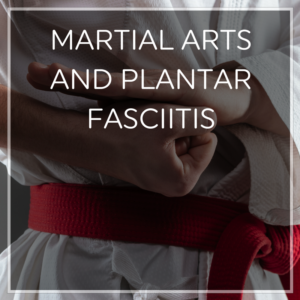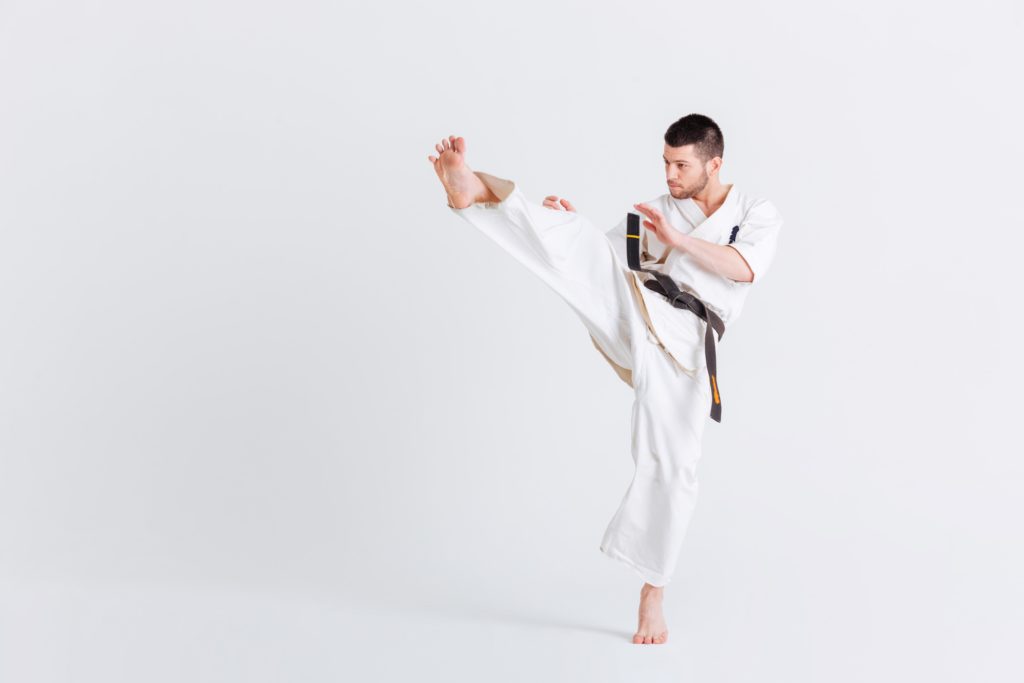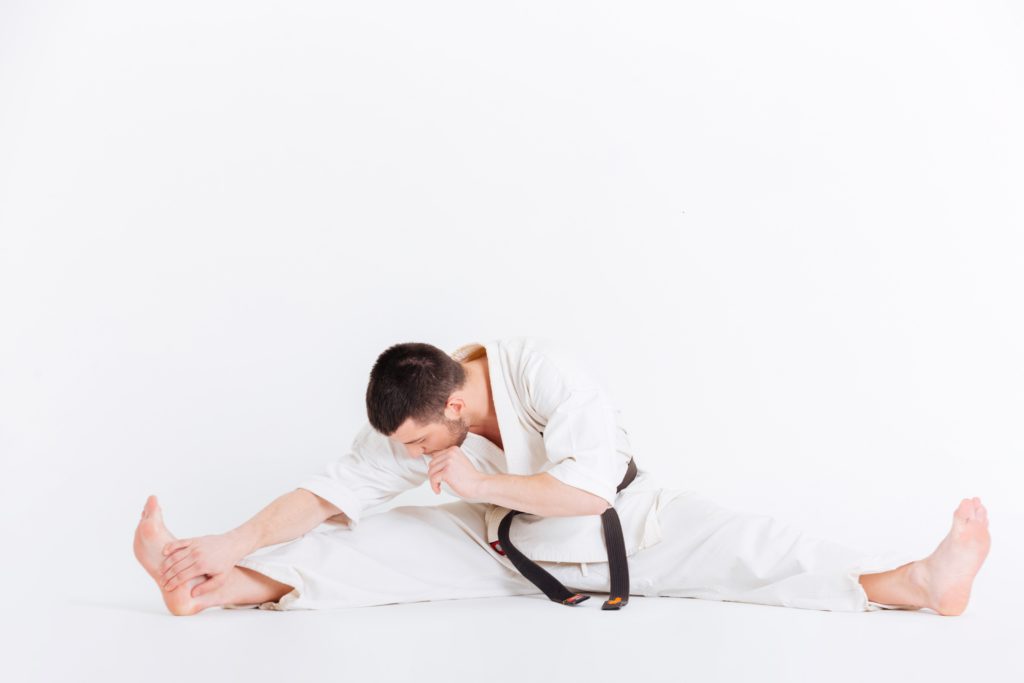 Youth and adults alike enjoy martial arts for good reason. With numerous popular martial arts disciplines, there’s something for every ability, style, and age group. And not only can martial arts improve flexibility, muscle control, strength, and cardiovascular health; many disciplines offer mental health benefits including a constructive outlet for stress or anger, meditation techniques, mental control, and stress reduction.
Youth and adults alike enjoy martial arts for good reason. With numerous popular martial arts disciplines, there’s something for every ability, style, and age group. And not only can martial arts improve flexibility, muscle control, strength, and cardiovascular health; many disciplines offer mental health benefits including a constructive outlet for stress or anger, meditation techniques, mental control, and stress reduction.
Many people with plantar fasciitis have found that low-impact martial arts disciplines can be an ideal form of exercise that doesn’t aggravate their heel pain. However, just as many martial artists have developed plantar fasciitis and heel pain as a direct result of their involvement with martial arts.
Choosing a martial arts discipline wisely, preparing for your class or match properly with the correct gear, and knowing how to recognize and treat heel pain can mean the difference between a long and healthy career in the martial arts, and high risk of injury to the feet and heels.
Choosing a Martial Arts Discipline with Foot Health in Mind
If you have previously or are currently dealing with heel pain and plantar fasciitis, choosing a martial arts discipline is extremely important to avoid aggravating heel pain or relapsing. The higher impact (think kicks, strikes, and jumps), the longer the durations of standing, and the type of flooring you’ll be practicing on are all important factors.
You’ll also want to consider your relationship with your instructor and his or her flexibility. Most instructors are happy to allow you to modify or accommodate specific health concerns. Make sure you’re comfortable communicating your needs with your instructor.
If you have a history of plantar fasciitis, you may want to avoid very high impact martial arts disciplines that rely heavily on foot strikes like muay thai, taekwondo, hapkido, and karate. Low impact, gentler disciplines that emphasize wrestling, groundwork, and upper body work, like jiu jitsu, tai chi, or chi gong.
If your heels and feet are pain-free, and your arches are healthy, you may choose to engage in a higher-impact form of martial arts. However, you’ll want to take extra care to wear the proper gear and notice and treat any signs of plantar fasciitis.
Proper Gear and Support for Martial Arts

The proper gear and support are critical for a long and healthy career in any discipline of martial arts, whether or not you currently suffer from heel pain:
Footwear: While some instructors and disciplines encourage barefoot work, be extremely cautious of this approach–especially in high-impact martial arts disciplines that involve kicks, jumps, and strikes. These moves can place a great deal of strain and pressure on the arch of the foot, leading to small tears and progressive injury. Wear lightweight, supportive footwear with arch supports when possible. When going barefoot is required or preferable, wrap your feet with barefoot heel wraps, which drastically improve arch support while allowing for the flexibility and feel of bare feet.
Practice Surface: While a hardwood or laminate floor may look professional and is easy to keep clean after all those bare feet, this surface is very hard on feet and arches. When possible, practice on a mat or other supportive but cushioning surface. When in doubt, ask your instructor. He or she may have mats available for use.
Proper Warmup: Don’t underestimate the importance of stretching your feet and legs prior to a practice or competition, no matter which discipline of martial arts you choose. Take the time to stretch your calves, Achilles tendon, toes, and arch each time. This will help your feet and supporting tissue flex and stretch appropriately rather than succumbing to injury or strain.
Ongoing Muscle Strengthening: If you’re dedicated to avoiding injury to your feet in the martial arts, you should know that stretching and muscle strengthening can be used very effectively on a daily basis in addition to warm-up sessions. Not only will you avoid injury–you’ll notice improvements in your flexibility and capability in your chosen discipline.
Proper Rest Between Sessions: As with any exercise or activity, don’t push yourself too hard, especially when you’re just getting started. Build your muscles and allow them to rest properly in between. While it can be thrilling to learn a new skill or practice, allowing your muscles and ligaments proper rest will help build your tolerance for a new activity.
Recognizing and Treating Symptoms of Plantar Fasciitis from the Martial Arts

Plantar fasciitis and heel pain may onset suddenly or gradually over time. You’ll want to pay close attention to any of the following symptoms:
- Pain that is worst first thing in the morning as you step out of bed, and gradually improves throughout the day
- Dull or aching pain and/or stabbing “needle-like” pain with each step, in one or both feet
- Redness or inflammation along the bottom of the foot
- Swelling in the affected foot
If you notice any of these symptoms, it’s important to take appropriate action to head off plantar fasciitis early. At-home remedies for heel pain and plantar fasciitis are extremely effective, especially when used promptly:
- Use NSAIDs (non-steroidal anti-inflammatories) like Ibuprofen to reduce swelling and manage pain
- Ice your feet as needed to reduce swelling and inflammation
- Use orthotic inserts whenever possible to support and cushion your compromised arch
- Rest your feet as much as possible to allow your arch to heal
- Stretch your feet and arch to improve strength and flexibility
- Evaluate whether you are maintaining a healthy weight, and take steps to lose weight if needed.
- Obesity is highly linked with plantar fasciitis because of the additional impact extra weight puts on the arches.
By informing yourself about the right martial arts discipline for you, the proper gear to support you in your pursuit, and staying proactive about symptoms of plantar fasciitis, you can avoid heel pain and enjoy all the mental and physical benefits that the martial arts can provide.



